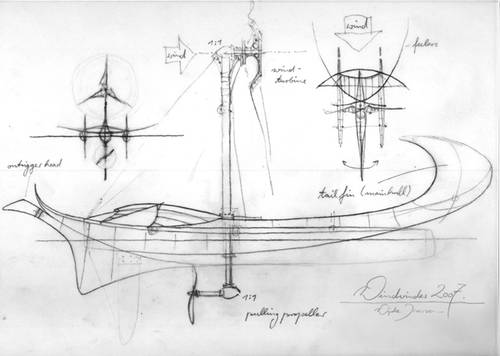Here on the first day of the 2010 ICF Canoe Slalom World Championships, both athletes and organisers were put through their paces. The expected downpour has kept those behind the scenes on their toes, but thankfully the careful planning has kept the event running like clockwork.
The Course for the Heats and Friday's Team Event
Talking to Helen Reeves, ICF Technical Committee Member and course designer for this event, athletes will face a number of challenges. First up is the Big Drop, right at the start of the race it means the course is fast from the outset. This can be intimidating for some, perhaps not for the leaders. So, fast and furious, the course by its very nature is swirly and unpredictable making it very changeable. Add this to the unsavoury weather conditions, the water is even faster; another challenge for the athletes who may find it hard to predict the water. The downstream gates also pose a little problem. The tight stagger sequence quite early on make the combination at Gates 4, 5 and 6 very tricky, reading the water here will be a challenge.
Men's C2
The day started with the Men's C2. Qualifying in first place was the British duo made up of Tim Baillie and Etienne Stott. They cleared the field with half a second to spare. The French team, Denis Gargaud Chanut and Fabien Lefevre completed just the one run, safe in the knowledge that their time of 107.12 would put them in the top 30. It sure did. Their one and only run was the second fastest of the day. China's Hu-Shu team are becoming a regular fixture on the Canoe Slalom startlist. Securing their place with the third fastest time of the day.
Others appearing in the semi-finals on Saturday morning are Slovakia's Kucera-Batik and the Hochschorner brothers, Great Britain's Florence-Hounslow. One big surprise was the failure of Czech pair, Volf-Stepanek to get through to the next round.
Women's K1
Next up was the Women's K1. On her second run, Maialen Chourraut (ESP) made the course look positively easy winning the best time with nearly a second to spare. Following behind was Czech Republic's Stepanka Hilgertova and China's Yingying Zou. Team GB fared well with all three athletes from the Women's team qualifying. Louise Donnington qualified with the 5th fastest time, Lizzie Neave with the 15th fastest and Fiona Pennie with the 17th fastest time. Jana Dukatova, ranked first coming into the competition, is perhaps saving her best for last, qualifying with the 7th fastest time with her team mate, Dana Benusova with the 9th fastest time. The two Austrians, Corinna Kuhnle and Violetta Oblinger-Peters also made it, while their young compatriot and recent Youth Olympic bronze medallist Viktoria Wolffhardt didn't quite make it. One Youth Olympian who did make it through however is Australia's Jessica Fox. She took the last qualifying spot with the 30th fastest time.
Men's C1
A few surprises in this line-up with all the favourites ending up a little down the list of qualifiers. With the fastest time of the afternoon, Germany's Sideris Tasiadis will lead the 30 men going into the semis on Sunday. David Florence (GBR) and Takuya Haneda (JPN) follow with the second and third place respectively. In 4th in 5th place were the two Frenchmen. Reigning World Champion, Tony Estanguet finished with a time of 98.89 in his one and only run. Denis Gargaud Chanut's fastest run was in a time of 100.36. His second run included a 50 second penalty.
Home boys, Anze Bercic and Benjamin Savsek came in together, just one second between them in 9th and 10th times respectively. Michal Martikan, who also just completed one run, qualifies with 11th fastest time followed by his fellow Slovakian, Alexander Slafkovsky.
Women's C1
Both Jessica Fox (AUS) and Jana Dukatova (SVK) were clearly saving their energy today as they raced just one run. Both of them ended up at the top of the board, Jess was fastest with a time of 123.52, Jana second with her time of 131.85. Both Nanqin Chen and Qianqian Teng (CHN) qualified in 6th and 13th place respectively. Judging by their year's performance, they may be saving their best for last. Qualifying in third place is France's Caroline Loir followed by Australia's Rosalyn Lawrence (last year's Women's C1 silver medallist) and Germany's Michaela Grimm.
Tomorrow we will see the course again with the Men's K1 heats from 2.30pm (CET) onwards and the Team events on Friday. Come Saturday, we will see a whole new course throwing up more difficulties for these top-class athletes to overcome. Keep watching!
 Kayaks are so easily driven that the urge to equip them for sailing must be as old as kayaks themselves. The original CLC SailRig, from 1995, has been built in vast numbers. There hasn't been a SailRig kit for years. When we noticed recently that it is the second best selling plan set (after the Chesapeake 17), we decided to study how to make the kit easy and affordable to build.
Kayaks are so easily driven that the urge to equip them for sailing must be as old as kayaks themselves. The original CLC SailRig, from 1995, has been built in vast numbers. There hasn't been a SailRig kit for years. When we noticed recently that it is the second best selling plan set (after the Chesapeake 17), we decided to study how to make the kit easy and affordable to build. 





